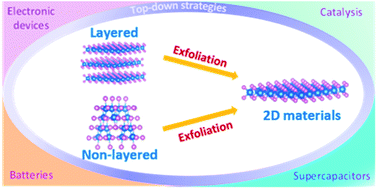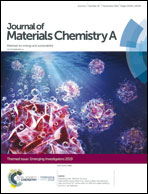Recent advances in exfoliation techniques of layered and non-layered materials for energy conversion and storage
Abstract
The past few decades have witnessed rapid advances in two dimensional (2D) materials as they carry a stellar set of unique properties over their bulk counterparts. Two families of 2D materials, namely, layered 2D materials and nonlayered 2D materials, have garnered considerable attention. Layered 2D materials have been widely used in electronic devices, catalysis, and bioelectronics due to their tunable energy band structure, and superlative physical and chemical properties. By contrast, dangling bonds on the surface of non-layered 2D materials and intrinsic crystal distortion endow them with abundant active sites for use in energy storage and photodetectors. In this context, the ability to effectively exfoliate 2D materials is the key to these applications. This review highlights the recent developments pertaining to exfoliation techniques applicable to 2D layered and non-layered materials and the corresponding exfoliation mechanisms. In particular, some emerging exfoliation techniques are emphasized. Subsequently, how these exfoliation techniques facilitate the application of 2D materials in electronic devices, catalysis, batteries, and supercapacitors is summarized. Finally, an outlook is provided with an aim to lay out the promising future research directions on 2D materials produced by exfoliation approaches.

- This article is part of the themed collections: Journal of Materials Chemistry A Advisory Board Collection, Recent Review Articles and Journal of Materials Chemistry A Emerging Investigators


 Please wait while we load your content...
Please wait while we load your content...